[Thanks to xkcd.com for the use of their comic.]
In a recent post on his blog, Left Seat, J. Mac McClellan (former editor-in-chief of Flying magazine and current editor of EAA’s Sport Aviation) re-ignited the controversy about whether or not turning downwind can be dangerous because it will cause a loss of airspeed due to the inertia of the aircraft. Many pilots responded to disagree with McClellan’s post, and I won’t copy all those discussions here. Rather, let’s take the MasterFlight approach to this problem: break it down and put it back together with recommended procedures and techniques.
This is a challenging topic to discuss for a couple reasons. First, to really grasp the underlying issues at play here requires going back to high school physics, which is a painful memory for many of us. Second, there are so many interdependent variables involved in flight (altitude, attitude, air density, wind, thrust, drag, aircraft configuration, etc.) it is really easy to mix them up.
Breaking Down the Turn
The first step in breaking things down is to eliminate as many variables as possible. For this discussion, I will define a “standard turn” as level (constant-altitude), constant-rate, coordinated, and with constant power. And to make sure we are on the same page, let’s walk through the dynamics of a standard turn in a no-wind situation. This should be a nice refresher of your Private Pilot ground training with a little bit of high-school physics thrown in.
Entry
The recommended procedure to enter a normal turn is to roll to the appropriate bank angle for the turn and apply back pressure on the controls to maintain altitude.
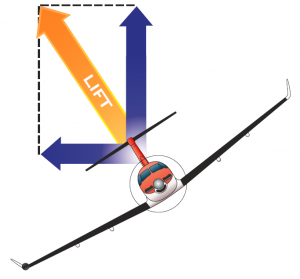 The bank angle causes the lift from the wings to provide both horizontal and vertical forces. The horizontal component of lift causes the aircraft to change direction (accelerate) sidewards. The vertical component of lift continues to counteract the force of gravity so the aircraft can stay in the air.
The bank angle causes the lift from the wings to provide both horizontal and vertical forces. The horizontal component of lift causes the aircraft to change direction (accelerate) sidewards. The vertical component of lift continues to counteract the force of gravity so the aircraft can stay in the air.
Because the vertical component of lift decreases as the aircraft banks, the pilot pulls back on the controls to increase the total lift from the wings in order to maintain a balance between the vertical component of lift and the force of gravity. This is necessary to keep the aircraft at a constant altitude.
Remember that in steady flight, thrust and drag balance each other out. The increase in lift causes an increase in induced drag. If we do not add power, the aircraft will slow down enough for total drag on the aircraft and the thrust from the engine to balance each other again. This is why you were taught to add power to maintain airspeed in a steep turn. Any increase in lift causes an increase in drag, which in turn will cause the aircraft to slow down unless you add power. The following video shows the relationship between drag, thrust and airspeed in our standard (constant power) turn.
The Turn
Once the aircraft has stabilized at the new airspeed, the turn is straightforward. Rudder input is used to keep the turn coordinated. The sidewards force from horizontal component of lift changes the direction of the aircraft’s movement sidewards. This causes the vertical stabilizer to yaw the aircraft in the direction of the turn. In a coordinated turn, the airflow should remain straight down the airframe. Gliders and helicopters use a piece of yarn outside the cockpit in the airstream to help pilots keep their turns coordinated. In other words, the yawing of the aircraft will match the change in direction of flight, and the aircraft will neither slip nor skid.
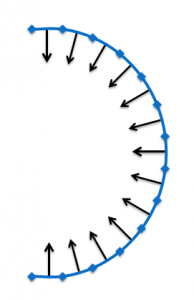 You may already intuitively know that airplanes turn in a circle from your Private Pilot training. Remember how good it felt when at the completion of a perfectly performed steep turn you felt the bump of passing through your own wake? In a coordinated turn, the sideward force is always perpendicular to the direction of motion. Taking us back to high-school physics, this is a centripetal force, and it causes the aircraft to fly a nice, circular path in the turn.
You may already intuitively know that airplanes turn in a circle from your Private Pilot training. Remember how good it felt when at the completion of a perfectly performed steep turn you felt the bump of passing through your own wake? In a coordinated turn, the sideward force is always perpendicular to the direction of motion. Taking us back to high-school physics, this is a centripetal force, and it causes the aircraft to fly a nice, circular path in the turn.
With reference to the air you are flying through, a well-executed turn will always be a circle.
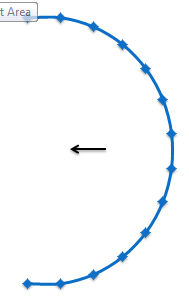 Now here’s a tricky bit. If you average all the forces throughout the turn, you get something like the picture on the right as the average force. Note that it is simply a force from right to left. The upward and downward forces cancel out.
Now here’s a tricky bit. If you average all the forces throughout the turn, you get something like the picture on the right as the average force. Note that it is simply a force from right to left. The upward and downward forces cancel out.
Newton’s 2nd law of motion is F = ma (force equals mass times acceleration), which we can rewrite as a = F/m (acceleration equals force divided by mass).
Let’s take an example where we do the math with a particular aircraft in a particular turn and discover that the acceleration turns out to be 3.33 knots per second leftward. If you then multiply that acceleration by the amount of time in the turn (for example, 60 seconds in a standard rate turn), you get a 200 knot change in velocity leftward.
If I am flying 100 knots rightward, and make a 200 knot change in velocity leftward, I will end up flying 100 knots leftward,
Exit
Exiting the turn is the reverse of entering the turn. The recommend procedure is to roll to wings level while reducing back pressure on the controls. The horizontal component of lift goes away, total lift is reduced back to match gravity, and the consequent reduction in drag causes the aircraft to accelerate back to the airspeed it had prior to the turn.
It’s All Relative
The root of the controversy is a confusion between two different frames of reference—the air and the ground. A frame of reference defines the position of a object (for example, an airplane), and its motion over time. The proponents of the view that turning downwind will cause a loss of airspeed due to a change from headwind to tailwind are mixing up those two different frames of reference. Again, let’s break it down.
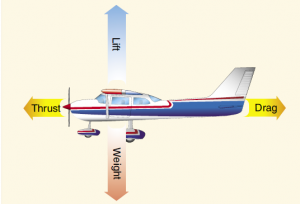 Except for gravity, the forces that act on an aircraft in flight are aerodynamic forces, which are forces exerted by the air in which the aircraft is immersed, and is due to the relative motion between the aircraft and the air.
Except for gravity, the forces that act on an aircraft in flight are aerodynamic forces, which are forces exerted by the air in which the aircraft is immersed, and is due to the relative motion between the aircraft and the air.
Airspeed is the speed with which the aircraft is moving through the air. If airspeed gets too low, the aircraft stalls, regardless of how fast the aircraft is moving over the ground. When describing airspeed and aerodynamic forces, the air the aircraft is flying through is the frame of reference; the motion of the aircraft is defined relative to the air.
Ground speed is the motion of the aircraft defined relative to the ground. When talking about ground speed, courses over ground and positions over fixes, the ground is the frame of reference.
Wind is air moving over the ground. Thus, wind speed is really just the ground speed of the air. Wind direction is the direction the air moves over the ground. Wind is what connects our two frames of reference. If you take the airspeed and heading of an aircraft and add the ground speed and direction of the air, you will get the ground speed and track of the aircraft. This should be familiar to you from your Private Pilot cross-country planning exercises. 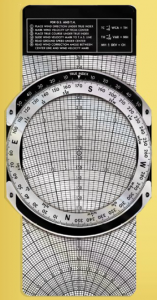 The good ol’ E6B had a wind vector calculator that would allow you to compute aircraft ground speed from airspeed and wind.
The good ol’ E6B had a wind vector calculator that would allow you to compute aircraft ground speed from airspeed and wind.
A tailwind is when the wind over the ground blows in the direction of travel and causes ground speed to be faster than airspeed—the wind is on the tail of the aircraft. A headwind is when the wind over the ground blows against the direction of travel and causes ground speed to be slower than airspeed—the wind is on the head of the aircraft.
(For completeness) relative wind refers to the speed and direction of the air using the airplane as a frame of reference. In other words, it describes how the air is moving over the surface of the aircraft. Most often, pilots discuss relative wind in the context of air flowing over airfoils, for example when discussing angle-of-attack.
Windshear is related to but different from wind. It is a change in wind between two air masses over a relatively short distance. When an aircraft passes across a boundary between two air masses, the relative wind can abruptly change. Due to inertia, the aircraft’s motion initially remains the same, but the aircraft may experience an abrupt change in airspeed and angle of attack. Pilots sometimes describe a particular windshear experience as a headwind-shear (when the relative wind shifts from the tail of the aircraft to the head), a tailwind-shear (when the relative wind shifts from the head of the aircraft to the tail), or a vertical shear (causing abrupt changes in lift). Again, you experience windshear by crossing a boundary between two air masses, for example on short final when the wind dies down due to surface friction or in a microburst.
Tailwind Is Not the Same as Tailwind-Shear
Back to the original topic, is a turn downwind dangerous? It may be, but not for the reasons explained by Left Seat. Mac argues that when an aircraft turns, it’s ground speed will remain constant due to inertia—because the aircraft is somehow tethered to the ground. If the ground speed remains constant, the aircraft will experience a tailwind-shear as it turns downwind and its airspeed will drop (even though the aircraft is not crossing an air mass boundary).
Mac starts:
It’s an article of faith among many pilots that the groundspeed of an airplane and its airspeed are totally unrelated. And that’s almost always true. But only when there is no wind.
But when there is wind a change in groundspeed of an airplane changes airspeed. The reason a change in groundspeed when flying in wind can, at least momentarily, change airspeed is inertia. It’s useful to think of an airplane in flight as responding to nothing but the ocean of air it is operating in, but our old friend inertia keeps all airplanes—and spacecraft in orbit for that matter—tethered to the ground.
After reviewing the basics like we just did, we can see the first statement does not make sense. If there is no wind, then airspeed and ground speed will be identical. That’s a pretty strong relationship. In the presence of wind, airspeed and ground speed remain related, by the wind itself.
The second statement, that a change in ground speed can change airspeed also does not make sense; it messes up the causal relationships. Speeds don’t cause changes in other speeds, forces cause changes in speeds (velocity, actually, see below). Because both airspeed and ground speed represent the motion of the same object (the aircraft), if one changes, the other will necessarily change. The presence or absence of wind is irrelevant.
It doesn’t matter whether the force that changes the velocity of an aircraft is aerodynamic or ground-based. A change in velocity is a change in velocity. One scenario I can think of where ground forces would change velocity is braking on landing. Once the aircraft is in contact with the ground, the forces of friction on the tires can change its velocity. I guess auto-towing a glider or catapult-launching an aircraft off a carrier would also be ground forces that would change the velocity of an aircraft. In flight, all the forces accelerating the aircraft are aerodynamic (i.e., relative to the air).
The biggest confusion in Mac’s argument is over inertia. Inertia does not tether an aircraft (or a spacecraft for that matter) to the ground. Once an aircraft is in flight, it is no longer connected to the ground. The only tethering going on is gravity, which tethers the aircraft to the center of mass of the planet.
Inertia is completely different. It is the resistance of an object to change its state of motion. In other words, it is the propensity of an object to travel in a straight line at a constant velocity in the absence of any external forces. In fact, inertia is what prevents a spacecraft from returning to earth. In the absence of gravity, inertia would cause a spacecraft to fly off into space.
Further into his post, Mac argues that when an aircraft turns, it’s ground speed will remain constant because the aircraft is somehow tethered to the ground by inertia. He continues that since the ground speed remains constant from inertia, the aircraft will experience a tailwind-shear as it turns downwind and its airspeed will drop.
This would only work if the aircraft were indeed tethered to the ground somehow. For example, while taxiing, if you turn downwind, the aircraft will experience a tailwind-shear. if an auto-towed glider turns from upwind to downwind, it would experience a change in airspeed, because it is flying at the ground speed of the tow vehicle. Or if an aircraft carrier turned downwind, the aircraft on deck would experience a change in airspeed (assuming the wind is not offset by the ocean current, yet another frame of reference).
Mac’s argument additionally appears to be confusing speed with velocity (by ignoring the change of direction in the turn). The velocity of an object is the combination of both its speed and its direction. Due to inertia, in the absence of any forces, the velocity of an object will not change. In the case of a turn, the aircraft is clearly changing direction. Hence, the velocity is changing, so some forces must be at work to overcome inertia. I described those above, the net centripetal force from the horizontal component of lift during the turn.
 For example, if I am travelling through the air at 100 knots eastward, inertia will keep me going at 100 knots eastward. A 180° turn to the west, constitutes a 200 knot change in velocity along the east-west axis. If my ground speed in this case were 80 knots eastward (due to a 20 knot headwind), that 200 knot change in velocity will result in a ground speed of 120 knots westward (downwind). The change in velocity is the same regardless of the frame of reference I am using.
For example, if I am travelling through the air at 100 knots eastward, inertia will keep me going at 100 knots eastward. A 180° turn to the west, constitutes a 200 knot change in velocity along the east-west axis. If my ground speed in this case were 80 knots eastward (due to a 20 knot headwind), that 200 knot change in velocity will result in a ground speed of 120 knots westward (downwind). The change in velocity is the same regardless of the frame of reference I am using.
Where does the energy come from to make that change in velocity? From the thrust that was diverted from form drag into horizontal lift when the airspeed dropped during the turn.
Ground speed does not remain constant during a turn due to inertia. There is no magical force that keeps aircraft tethered to the ground turning wind into windshear—unless, of course, you are taxiing or your aircraft is strapped to the deck of an aircraft carrier.
The Effects of Wind on Ground Track
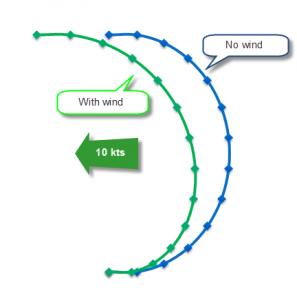 Wind can have an interesting effect on the path an aircraft flies over the ground, especially while turning. Here is a comparison between the track over the ground of our standard turn in no wind and when turning from 10 knots headwind to 10 knots tailwind.
Wind can have an interesting effect on the path an aircraft flies over the ground, especially while turning. Here is a comparison between the track over the ground of our standard turn in no wind and when turning from 10 knots headwind to 10 knots tailwind.
The FAA agrees that this is a well understood phenomenon, and we spend a lot of time during Private Pilot training learning how to correct for wind drift during ground-reference maneuvers (turns around a point, S-turns, rectangular patterns, etc.).
From the FAA Airplane Flying Handbook:
As soon as an airplane becomes airborne, it is free of ground friction. Its path is then affected by the air mass in which it is flying; therefore, the airplane will not always track along the ground in the exact direction that it is headed.
With the airplane headed downwind, the groundspeed is greatest and the rate of departure from the road will be rapid; so the roll into the steep bank must be fairly rapid to attain the proper wind correction angle.
Ground speed does not remain constant in a turn. It increases when you turn downwind, and it decreases when you turn upwind.
So Where Is The Danger?
If you are flying at altitude, there is little danger from turns. You can fly circles in the sky all day long, and in smooth air, your airspeed will remain constant. If there is a wind, your track over the ground would look like a little strange, but you are so high up, you can’t really perceive it.
The issue becomes much more important at lower altitudes, when you are flying in reference to the ground and often at slower airspeeds. Down low, the pilot can perceive the aircraft’s track over the ground and will make adjustments. From the FAA Airplane Flying Handbook:
To follow a desired circular ground track, the wind correction angle must be varied in a timely manner because of the varying groundspeed as the turn progresses. The faster the groundspeed, the faster the wind correction angle must be established; the slower the groundspeed, the slower the wind correction angle may be established. It can be seen then that the steepest bank and fastest rate of turn should be made on the downwind portion of the turn and the shallowest bank and slowest rate of turn on the upwind portion.
Can the airspeed get slow when flying downwind? YES! Not because of inertia, but rather because pilots use steeper bank angles due to the faster ground speeds downwind. Steeper bank angles increase induced drag and cause the aircraft to slow down at a greater rate. Imagine turning downwind and perceiving that the airplane is accelerating. A natural reaction would be to believe your airspeed is doing the same, but it is an illusion. It could very well be that your airspeed is decreasing due to the increased load factor in the turn.
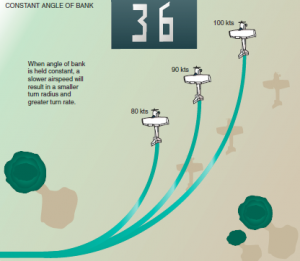
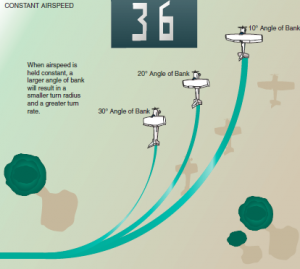
Some argue that the tailwind shear effect of turning downwind is more pronounced in larger aircraft due to their larger mass—again a motivation for the inertia argument. But the issue here is really one of increased airspeed. Most large aircraft fly patterns at faster airspeeds, and the faster you are flying, the larger your turns will be.
If you are trying to fly a certain track over the ground, the tendency will be to make steeper banked turns in faster flying aircraft. Steeper bank angles create larger amounts of induced drag, which will decelerate faster flying aircraft more aggressively.
The most challenging and perhaps the most dangerous turn in a traffic pattern is the downwind to base turn. Not only is the ground speed at its highest, but also the pilot must turn more than 90 degrees in order to establish the wind correction angle for the base leg. This is an invitation for a steep turn, low and slow.
Steep turns low and slow are dangerous for two reasons. First, the aircraft has a tendency to slow down (which we described already). Second, stall speed increases as the load factor increases in a banked turn. In effect when making steep banked turns low and slow, a pilot is rapidly closing the gap between airspeed and stalling speed—risking an accelerated stall. In addition, if a pilot finds they are overshooting a turn due to a tailwind, he or she may try to cheat the turn by skidding with rudder—risking a cross-controlled stall. A cross-controlled, accelerated stall is a recipe for a spin.
Recommended Procedures and Techniques
These should sound familiar, but they bear repeating:
- When flying low to the ground, beware ground speed illusions and always monitor your airspeed.
- When flying a traffic pattern:
- Limit your bank angle to 30°.
- Never skid.
- Fly larger patterns in high wind situations and at high-density altitude airports to give yourself plenty of room to make normal banked turns.
I know one flight instructor who teaches his students to chant when circling to land, “Airport; airspeed; altitude; airport; airspeed; altitude; airport; airspeed; altitude.” It works; it forces his students to pay attention to airspeed constantly. Always fly the airspeed, not the ground speed.
Ironically, at the end of his post, Mac posits that he will not have changed any minds.
But, since inertia is very real, and very powerful, I don’t expect this discussion to change any minds. Beliefs also have inertia.
So true, Mac, so true. Perhaps it’s all relative to your frame of reference.


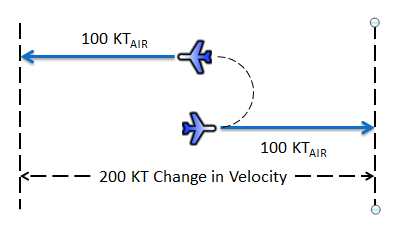
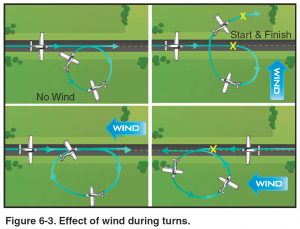
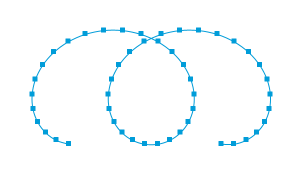
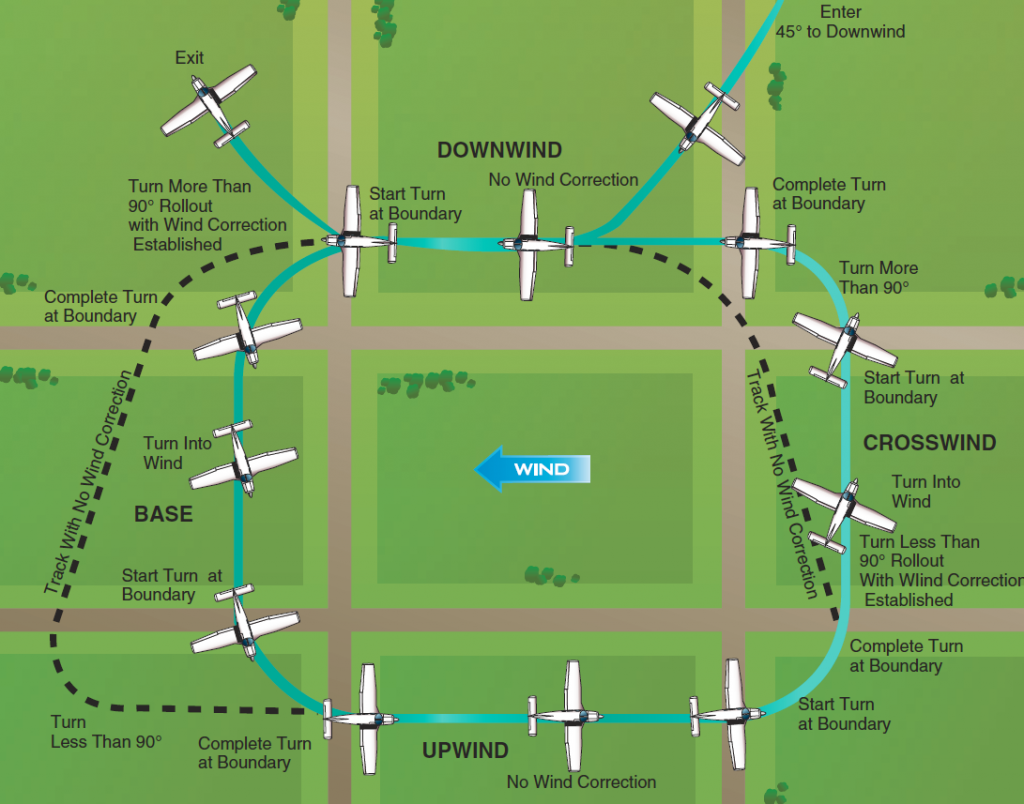
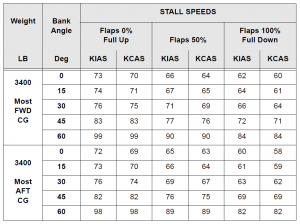
Wow. I can’t believe the coincidence.
Just yesterday I was doing pattern work where the wind was a quartering headwind. During a crosswind to downwind turn (both legs had a tailwind component), my student started referencing our our ground track and as a result of the unusual excess ground speed subconsciously input extra rudder to make the turn “look right.” When he cross-checked his instruments, he saw he was way out of coordination and immediately fixed it. But then he proceeded to fly the downwind leg without any wind correction angle!
Clearly there is a gap in situational awareness here, which I suspect is impacting a lot of pilots. There is a reason we are taught ground-reference maneuvers, and if it has been so long that you’ve lost the intuitive feel of managing wind drift, you better go out and practice them again. That’t the whole point of ground reference maneuvers in the first place.